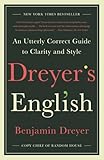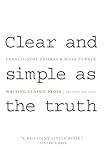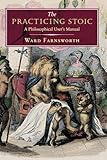Something disappointing in the fact that despite his immaculate New Yorker essays and his perfect children’s books (the latter of which is nothing to scoff at), E.B. White will most likely be primarily remembered for his over-valorized and pedestrian composition guide based on punched-up lecture notes from his old Cornell professor William Strunk. I’ll confess that White’s Stuart Little moves me more than Michael Cunningham’s The Hours, even if the former is about an anthropomorphic mouse who falls in love with a bird and the latter is about Virginia Woolf killing herself, but when it comes to The Elements of Style, I’m left completely cold. Linguist Geoffrey Pullum gleefully demolished the shrine to Strunk and White in a Chronicle of Higher Education piece where he condemned the “book’s toxic mix of purism, atavism, and personal eccentricity,” which is not “underpinned by a proper grounding in English grammar.” Still you’ll find precocious English majors and pretentious English professors who cling to White and Strunk’s guide as if holy writ, repeating their dogma of the best (or only) writing as “being specific, definite and concrete” or that “Vigorous writing is concise,” as if those were postulates of physics and not aesthetic suggestions mediated through a particular time and place (with the attendant masculine obsessions of that time and place).

 The Elements of Style endures, however, like some antique bacterium in Siberian permafrost released by climate change and threatening us all; something better left as a relic of the time that produced it rather than as a universal guide to good composition. They arrogantly pose laws as if they were the Author of the Decalogue, and their stylistic affectations are configured as inviolate rules of grammar. Strunk and White are mummies of the Lost Generation, bound in typewriter ribbon and pickled with scotch, and their adjective-slaying, adverb-slaughtering, violent Fitzgeraldian demands to kill your darlings reflect a type of writing that’s only one example in the many-mansioned house that is literature. It’s not that the advice they give leads to bad writing, and if concision is your aim than by all means dog-ear those pages of their book. It’s rather that Strunk and White exclude anything with a glint of the maximalist, a hint of the baroque, a whiff of the rococo, a sniff of the Byzantine, or—egad!—even a touch of the purple. They make totems of simplicity, fetishes of concision, idols of conventionality. I can’t in good conscience tell students that they should “Prefer the standard to the offbeat” or that that they should “not affect a breezy manner.” Literary style, as with clothing, is an issue not of dressing like somebody else, but of being the most fully you that you can be (as Queer Eye’s Tan France would no doubt confirm). If Brooks Brothers is your thing, then by all means let Strunk and White be your guide, but never forget that the wardrobe goes back a way. “It’s sad,” Pullum writes of the regard in which the book is still held a century after it was written. For 13 years I’ve taught college composition, and for all 13 of them I’ve refused to teach The Elements of Style.
The Elements of Style endures, however, like some antique bacterium in Siberian permafrost released by climate change and threatening us all; something better left as a relic of the time that produced it rather than as a universal guide to good composition. They arrogantly pose laws as if they were the Author of the Decalogue, and their stylistic affectations are configured as inviolate rules of grammar. Strunk and White are mummies of the Lost Generation, bound in typewriter ribbon and pickled with scotch, and their adjective-slaying, adverb-slaughtering, violent Fitzgeraldian demands to kill your darlings reflect a type of writing that’s only one example in the many-mansioned house that is literature. It’s not that the advice they give leads to bad writing, and if concision is your aim than by all means dog-ear those pages of their book. It’s rather that Strunk and White exclude anything with a glint of the maximalist, a hint of the baroque, a whiff of the rococo, a sniff of the Byzantine, or—egad!—even a touch of the purple. They make totems of simplicity, fetishes of concision, idols of conventionality. I can’t in good conscience tell students that they should “Prefer the standard to the offbeat” or that that they should “not affect a breezy manner.” Literary style, as with clothing, is an issue not of dressing like somebody else, but of being the most fully you that you can be (as Queer Eye’s Tan France would no doubt confirm). If Brooks Brothers is your thing, then by all means let Strunk and White be your guide, but never forget that the wardrobe goes back a way. “It’s sad,” Pullum writes of the regard in which the book is still held a century after it was written. For 13 years I’ve taught college composition, and for all 13 of them I’ve refused to teach The Elements of Style.


 Luckily there are no shortage of composition guides of varying qualities and uses, and I’ve taught a cornucopia of them (veggies both rotten and succulent). The nearest to Strunk and White is George Orwell’s “Politics and the English Language,” which for what it shares with The Elements of Style—in demands for the elimination of excess words, the denigration of the noble passive voice, and the provincialism that piously intones that we should “Never use a foreign phrase, a scientific word, or a jargon word”—still has crusted about it some interesting philosophical observations about the relationship of language to thought. Many of my colleagues are partial to Gerald Graff’s They Say/I Say, which is less a style guide than it is a general first-year composition guide, focusing on the way in which arguments can be posed—a useful volume, even if its Stanford doctorate holding author’s affectation of being a reformed ‘50s greaser who learned the importance of higher education leaves Generation Z befuddled. Several years ago, I put in a book order for Stanley Fish’s How to Write a Sentence: And How to Read One, enchanted by his mea culpa that “Some people are bird watchers…I belong to the tribe of sentence watchers.” Yet like many Fish books it seemed like a good idea at the time. For similar reasons, I never even thought to crack the spine of Steven Pinker’s The Sense of Style: The Thinking Person’s Guide to Writing in the 21st Century, with its promise to bring cognitive science to bear on the humble scribbler’s trade.
Luckily there are no shortage of composition guides of varying qualities and uses, and I’ve taught a cornucopia of them (veggies both rotten and succulent). The nearest to Strunk and White is George Orwell’s “Politics and the English Language,” which for what it shares with The Elements of Style—in demands for the elimination of excess words, the denigration of the noble passive voice, and the provincialism that piously intones that we should “Never use a foreign phrase, a scientific word, or a jargon word”—still has crusted about it some interesting philosophical observations about the relationship of language to thought. Many of my colleagues are partial to Gerald Graff’s They Say/I Say, which is less a style guide than it is a general first-year composition guide, focusing on the way in which arguments can be posed—a useful volume, even if its Stanford doctorate holding author’s affectation of being a reformed ‘50s greaser who learned the importance of higher education leaves Generation Z befuddled. Several years ago, I put in a book order for Stanley Fish’s How to Write a Sentence: And How to Read One, enchanted by his mea culpa that “Some people are bird watchers…I belong to the tribe of sentence watchers.” Yet like many Fish books it seemed like a good idea at the time. For similar reasons, I never even thought to crack the spine of Steven Pinker’s The Sense of Style: The Thinking Person’s Guide to Writing in the 21st Century, with its promise to bring cognitive science to bear on the humble scribbler’s trade.



 Style guides that deserve less snark include Karen Elizabeth Gordon’s delightfully gothic and grammatical The Transitive Vampire: The Ultimate Handbook of Grammar for the Innocent, the Eager, and the Doomed, Sam Leith’s excellent oratory and composition guide Words Like Loaded Pistols: Rhetoric from Aristotle to Obama (as terrible a title as that may be), and the wonderfully practical and pop culture infused primer by Arthur Plotnik, Spunk & Bite: A Writers’ Guide to Bold, Contemporary Style (as great a title as that is). I’d be remiss not to mention Random House’s chief copy editor Benjamin Dreyer’s engaging Dreyer’s English: An Utterly Correct Guide to Clarity and Style, which is a chatty, if thorough, encomium for the lost art of line editing, and which I’ve been pleased to read but have never taught. I’ve neither taught nor read Francis-Noël Thomas’s Clear and Simple as the Truth: Writing Classic Prose, with its promise of continental elegance and the Attic style, with its sophisticated sense that “learning to write cannot be reduced to acquiring writing skills,” but it’s to my loss.
Style guides that deserve less snark include Karen Elizabeth Gordon’s delightfully gothic and grammatical The Transitive Vampire: The Ultimate Handbook of Grammar for the Innocent, the Eager, and the Doomed, Sam Leith’s excellent oratory and composition guide Words Like Loaded Pistols: Rhetoric from Aristotle to Obama (as terrible a title as that may be), and the wonderfully practical and pop culture infused primer by Arthur Plotnik, Spunk & Bite: A Writers’ Guide to Bold, Contemporary Style (as great a title as that is). I’d be remiss not to mention Random House’s chief copy editor Benjamin Dreyer’s engaging Dreyer’s English: An Utterly Correct Guide to Clarity and Style, which is a chatty, if thorough, encomium for the lost art of line editing, and which I’ve been pleased to read but have never taught. I’ve neither taught nor read Francis-Noël Thomas’s Clear and Simple as the Truth: Writing Classic Prose, with its promise of continental elegance and the Attic style, with its sophisticated sense that “learning to write cannot be reduced to acquiring writing skills,” but it’s to my loss.



 Now our bookshelves can include a new title by Ward Farnsworth, dean of the University of Texas Law School, entitled Farnsworth’s Classical English Style. This title concludes a trilogy of Farnsworth’s, joining the unlikely cult hits of Farnsworth’s Classical English Rhetoric and Farnsworth’s Classical English Metaphor, bringing to a close his series of vaguely Victorian, vaguely tweedy, and vaguely Anglophilic guides to style and writing (joining The Practicing Stoic, which I reviewed for The Millions). In his preface, Farnsworth avails himself well in the style guide turf war between linguistic prescriptivists and descriptivists, noting with admirable writerly latitudinarianism that “Most modern books offer advice: write this way, not that way. This book does not offer advice of that kind.” Belying the slightly fussy affectation that the book presents, from its title evocative of the 19th century, to the bulk of Farnsworth’s examples coming from writers like Dickens, Churchill, Lincoln, and Dr. Johnson, his philosophy of composition is wonderfully anarchic when compared to the partisans of prescription who dominate the writing classroom and the style-guide racket. The packaging says “conservative,” but the spirit says “rip the pages out of your book.” Farnsworth’s Classical English Style is a Molotov cocktail wrapped in paisley; a hand-grenade cushioned in madras. “Books on style usually state precepts that have merit but that talented writers violate often. Much of this book is about the violations and reasons to commit them,” Farnsworth writes, but “Our topic, in part, is when to make exceptions.” A manifesto for the preppy revolutionary of the writing seminar. Because every single dictum of the Strunk-White Industrial Complex is complicated by Farnsworth; within the pages of his book you will encounter a defense of passive voice, a glorying in the labyrinthine curve of sentences that pack clause upon clause, and a celebration of the Latinate (though not at the expense of the Saxon).
Now our bookshelves can include a new title by Ward Farnsworth, dean of the University of Texas Law School, entitled Farnsworth’s Classical English Style. This title concludes a trilogy of Farnsworth’s, joining the unlikely cult hits of Farnsworth’s Classical English Rhetoric and Farnsworth’s Classical English Metaphor, bringing to a close his series of vaguely Victorian, vaguely tweedy, and vaguely Anglophilic guides to style and writing (joining The Practicing Stoic, which I reviewed for The Millions). In his preface, Farnsworth avails himself well in the style guide turf war between linguistic prescriptivists and descriptivists, noting with admirable writerly latitudinarianism that “Most modern books offer advice: write this way, not that way. This book does not offer advice of that kind.” Belying the slightly fussy affectation that the book presents, from its title evocative of the 19th century, to the bulk of Farnsworth’s examples coming from writers like Dickens, Churchill, Lincoln, and Dr. Johnson, his philosophy of composition is wonderfully anarchic when compared to the partisans of prescription who dominate the writing classroom and the style-guide racket. The packaging says “conservative,” but the spirit says “rip the pages out of your book.” Farnsworth’s Classical English Style is a Molotov cocktail wrapped in paisley; a hand-grenade cushioned in madras. “Books on style usually state precepts that have merit but that talented writers violate often. Much of this book is about the violations and reasons to commit them,” Farnsworth writes, but “Our topic, in part, is when to make exceptions.” A manifesto for the preppy revolutionary of the writing seminar. Because every single dictum of the Strunk-White Industrial Complex is complicated by Farnsworth; within the pages of his book you will encounter a defense of passive voice, a glorying in the labyrinthine curve of sentences that pack clause upon clause, and a celebration of the Latinate (though not at the expense of the Saxon).
Orwell offered six rules of writing; Strunk and White had their 11 principles (as if writing were a management course), but Farnsworth correctly notes that the “only rule really worth worrying about is simple: have a reason for whatever you do in your writing.” The whole of the law is thoughtfulness, otherwise do what thou wilt. Consequently, Farnsworth’s grills the sacred cows of muscular modernism’s style guides into bloody hamburger. If a revolution refers to a turning back (a “revolving” back) than Farnsworth doesn’t reject the icons of efficient writing so much—Papa Hemingway and Cormac McCarthy with all their swagger and exterminated adjectives—so much as he turns back to the rich classical rhetoric of the era that modernism supplanted, valorizing Thomas Paine and Charles Dickens, Mary Wollstonecraft and Frederick Douglas—with all of their biblical phrasing, their classical allusion, their gargantuan sentences and erudite diction. None of these writers would have passed the Strunk and White smell test; they could be long-winded, they could be multisyllabic, they could be meandering, allusive, and illusive. Eighteenth- and 19th-century prose calls to mind the Victorian critic Thomas Macaulay’s ambivalent assessment of Dr. Johnson, that “All his books are written in a learned language, in a language which nobody hears from his mother or his nurse, in a language in which nobody ever quarrels, or drives bargains, or makes love, in a language in which nobody ever thinks.” Which naturally makes one ask if some things might not precisely call for an unnatural language; which makes one apprehend that there might be more things in heaven and earth than are dreamt of in The Elements of Style.
Farnworth notes that “different styles are right for different occasions,” and while he doffs his cap to the style guides that reign triumphant, he also makes clear that “This book treats efficiency as important but as not enough.” The clipped sentences were advocated for and the endangered punctuation, adverbs, and adjectives threatened by the modernists and their intellectual descendants, who have long dominated the teaching of correct style and derived their conclusions in part because they were constrained by material conditions. A journalist like White was naturally limited by the tyranny of the margin, and much of style guide orthodoxy comes from print reporting where one really did have to be judicious with verbiage. Little wonder that efficiency and concision, in all of their capitalist and Protestant dreariness, became the shibboleths of proper style. Farnsworth’s point is that things were not always as such, nor that they always have to be so. If advocates for simplicity believe that the “purpose of a piece of writing is to transmit meaning to the reader; so, the writer’s job is to make the meaning easier to understand,” they’ll find little to agree with in Farnsworth’s Classical English Style. He summarizes the White-Strunk Consensus as being that good writing uses “simple words… short sentences… [and is] direct.” From that ideal there must be an exterminator’s crusade against “Needless words, needless length, or needless anything,” since they are rank inefficiencies. Farnsworth challenges every single one of those assertions.
But he’s not a complete libertine, and if anything, Farnsworth’s Classical English Style provides some deeper and more useful axioms of writing. Farnsworth offers a novel encapsulation of what makes good writing good, whether in the King James Bible or the Gettysburg Address. He hypothesizes that “Rhetorical power doesn’t come from just being clear or just being concise or by pushing in any other one direction. It’s usually created by some sort of push and pull, or in a word by contrasts.” Where a traditional style guide would emphasize shortness and simplicity as a means to writerly elegance, Farnsworth says its in the display of difference that writing becomes most fully engaging, with the union of oppositions, “usually one of friction or contrast, between two things.” Illustration of this is provided when he analyzes the average sentence structure and length in the writing of Supreme Court Justice Oliver Wendell Holmes, arguably the greatest American legal writer (and thus close to Farnsworth’s judicial attorney’s heart). While taking care to emphasize that sentence length should be varied, most contemporary style guides hew towards the mantra that shorter is better. Farnsworth compares two paragraphs of legal writing, one from Holmes and the other from the entirely more pedestrian writer (and man) Chief Justice William Rehnquist. What Farnsworth discovers isn’t that Holmes’s sentences are either shorter or longer on average than those of Rehnquist, rather Holmes’s shorter sentences are much shorter and his longer sentences are much longer. The consensus perspective might be that briefer sentences are preferable, and the oppositional pugilist might challenge that, but the reality is more nuanced—it was in the juxtaposition of such extremity, Farnsworth argues, that Holmes’s talents lay (It would be fascinating to see an analysis of Antonin Scalia, for what that justice lacked in scruples or ideas he made up for in style).
The rhythm of like and unlike is what becomes Farnsworth’s stylistic equivalent of the unified field theory of physics; it is (not unconvincingly) his argument for what separates the sublime from the passable. A shift in difference can take many forms; he writes that the “two things might be plain and fancy words, long and short sentences, hard and soft syllables, high or rich substance and low or simple style…the concrete and the abstract, the passive and the active, the dignified and the coarse, detachment from the audience and engagement with it.” The point, he seems to be saying, is that strict prescriptions for what words to pick, how long to make your sentences, what tone to affect, miss the point—the whole game is in setting up some pair of dueling Manichean principles and letting that tension be the energy that propels the prose. The whole thing puts me in mind of an old comic strip that one sees posted upon many a faculty office door. Underground cartoonist Matt Groening, now very wealthy from being creator of The Simpsons, had an entry in his strip Life in Hell entitled “The 9 Types of College Professor,” which included the “Single Theory-to-Explain-Everything Maniac.” His warning about this genus of academic was that their “Theory may be correct.”
That’s a bit what Farnsworth’s contention feels like to me—I’m skeptical, but his rhetorical analysis goes a long way to reverse engineering what makes great prose effective. The strength of his theory is that it’s general enough, for disjuncts in prose can be manifested in a variety of ways. He shows the strength of his observation when turning towards the Gettysburg Address, often configured as an exemplar of the plain-spoken Attic style. “The beauty and power of Lincoln’s wording,” however, “lies not in a relentless use of Saxon words but in the movement between earthy language and airier words and phrases that elevate.” Contrary to the Orwell prescription that native English etymology must always be preferred, Farnsworth says that Lincoln’s genius was in knowing how to weave the various strains of English together, so that “The Saxon words create feeling and convey simplicity and sincerity. They hit home. The Latinate words evoke thought and connect the images to concepts and ideals. The sound and tone of each balances the sound and tone of the other.”
If there is a drawback to Farnsworth’s Classical English Style, it’s that he leans so heavily on excerpts from “Shakespeare and the King James Bible, from Lincoln and Churchill, from Charles Dickens and Mark Twain.” His contention that “writers of lasting stature still make the best teachers” is well taken; I always tell my students that there is no shortcut to good writing, it can only come about by reading all of the time. But the problem with the canon is that it’s a surprisingly anemic syllabus. Farnsworth says that the “premise of the book” is that these canonical authors provide “a set of lessons on style drawn from writers whose words have stood the test of time.” To which it could be retorted that that’s true for some of them; Lincoln and Churchill are unambiguously great, G.K. Chesterton is a bit too sherry-pickled for my taste, and the passages from the Irish parliamentarian Henry Gratan were certainly good, but I don’t know if he’s withstood the test of time in the sense that he doesn’t appear on a Barnes & Noble tote bag. At a certain point the litany of selections from Cardinal Newman and Patrick Henry, Daniel Webster and Edmund Burke gets tiring. Farnsworth doth protests too much about there not being enough contemporary examples exhibiting the exact qualities he celebrates, pernicious modernist minimalism or not. Farnsworth’s Classical English Style would have benefited by some Joan Didion or James Baldwin, if we’re hunting for great sentences.
A small quibble, that. Because while Farnsworth’s tastes might be conservative, his appreciation is radical. Farnsworth’s Classical English Style has a great benefit in exploding all of the pious certitude of every grammarian who has yelled at somebody for ending a sentence in a preposition, every knife-wielding composition teacher who with red pen excises succulent meat from the bare-bone of the sentence, every sectarian of shortness declaiming that their way of writing is the only way of writing. Questions of composition pedagogy are often configured as a pitched battle between conservative prescriptivists and liberal descriptivists, the former drafting laws that must be followed and the later simply describing language as it’s actually used. Any number of conservative commentators who decry the so-called degradation of contemporary language, blaming texting or pop music, are within the prescriptivist camp even while most teachers of writing are firmly descriptivist. It would be easy to see the author names that Farnsworth uses to illustrate his points and to assume he’s in the conservative faction, and it’s true that he opposes a certain literary entropy, but he’s not mounting the same argument that people who decry text-speak are making. “Those who wring their hands about the decline of the language sometimes worry too much about the wrong things,” Farnsworth writes, “They observe with horror that people confuse uninterested with disinterested, or don’t know when to say fewer and when to say less, or fumble in their use of the apostrophe or other punctuation marks.” But grammar is incidental, in many ways; the true decline has been one of style, in part ironically pushed by the very people who claimed to be defending the honor of English. He argues that “the more meaningful decline of the language doesn’t involve the presence of mistakes. It involves absences that are easier to overlook: the abandonment of half the orchestra, the erosion of rhetorical ability, the dwindling of attention spans, the scarcity of speech that inspires and rouses and strikes deep.”
Farnsworth’s Classical English Style is a worthy rejoinder to The Elements of Style. If Strunk and White sent half the orchestra home, furloughing all of the grab-bag of rhetorical tropes that make language musical from anaphora to zeugma, then Farnsworth is passing around a collection plate to make sure that we can still hear their music. He’s correct that the style promoted by the composition guides that dominate our definitions of good writing have worthy observations in them—there is no shame in that mode, as long as we acknowledge it as one among many. But the full variety of ways of writing are reduced, minimized, obscured. Farnsworth is right to mount a defense of the beleaguered Byzantine. It puts me in mind of a volley in the Pedant’s War that I once got into with a colleague who objected to my favored use of the rhetorical trope of asyndeton, the practice of deleting conjunctions so as to effect a kind of breathless rhythm when listing ideas at the end of a sentence. For him this was unconventional and distracting; for me, it gave the structure of the sentence exactly what I wanted—a sense of things as being rushed, energetic, incomplete. Count me in Farnsworth’s camp. What he offers is a beautiful stylistic disestablishmentarianism. A sentiment that gives student and writer alike the permission to be breezy—the permission to prefer the offbeat to the standard. Follow the call: enjoy the unconventional word, the meandering sentence, the affected rhetorical trope. Extremism in defense of the baroque is no vice; moderation in pursuit of minimalism is no virtue.
Bonus Links:
—A Year in Reading: Ward Farnsworth
—Thinking Makes It So: Ward Farnsworth Reframes the Stoics with Wit and Insight
—Ward Farnsworth Doesn’t Mess Around: On ‘Classical English Metaphor’
—A Review! A Review! Farnsworth’s Classical English Rhetoric
—Scenes From Our Unproduced Screenplay: ‘Strunk & White: Grammar Police’
—Prescriptivists vs. Descriptivists: The Fifth Edition of The American Heritage Dictionary
—The Impediments of Style: Advice from Steven Pinker and the CIA
The post Humble Words Organized Beautifully: Ward Farnsworth on Style appeared first on The Millions.
Source : Humble Words Organized Beautifully: Ward Farnsworth on Style










